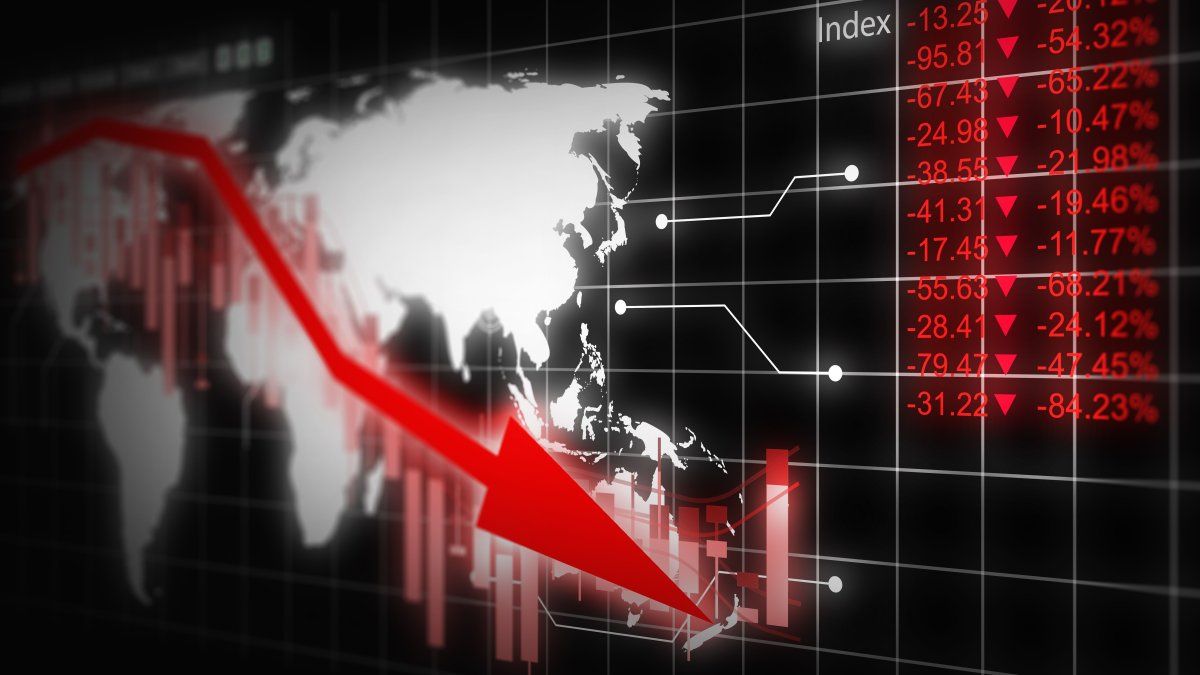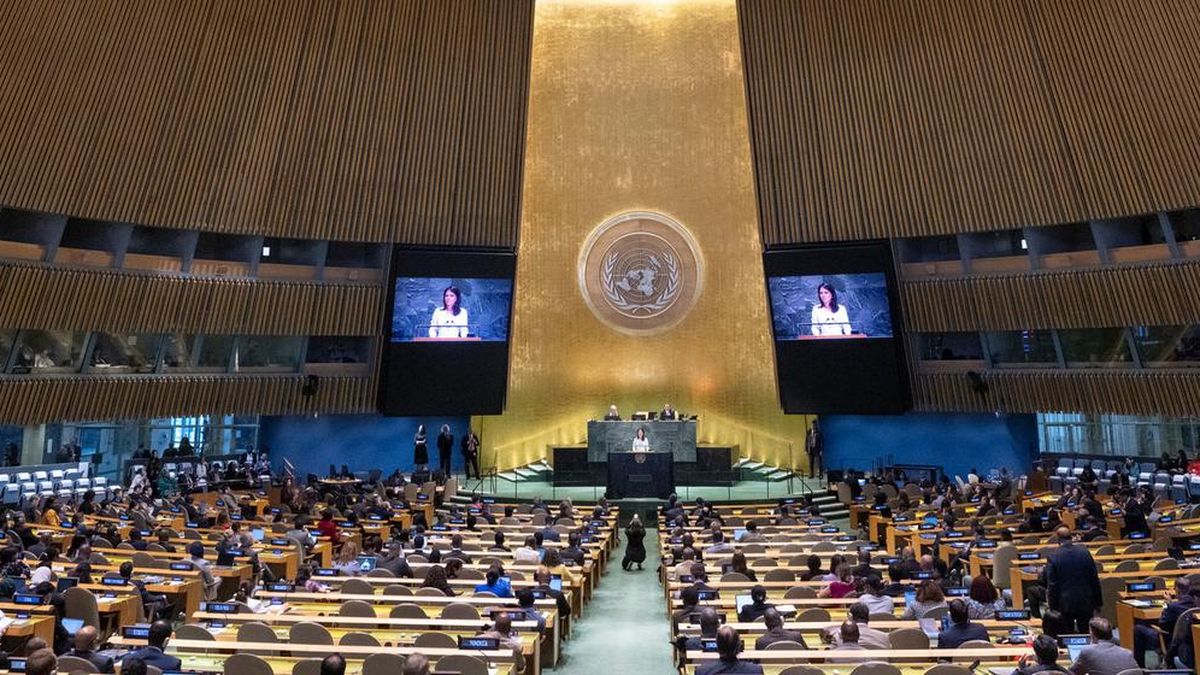The plan, which imposes a base tariff of 10% over all imports to the United States and punitive rates that scale up to 54% for Chinese products, unleashed a sales wave from Asia to Wall Street, fueling fears of inflationary acceleration, global recession and a replication of international trade. For investors and economists, the movement marks a turning point: a bold commitment to domestic reindustrialization that could end in an expensive calculation error.
An unprecedented tariff blow
On Tuesday Trump detailed his commercial offensive: a universal tax of 10% on the 3 billion dollars in annual imports of the US, with specific increases that punish rivals and allies equally – 54% for China (additional 34% to the base), 20% for the European Union, 15% for Venezuela and 10% for more than 120 countries, including large part of Latin America.
“This is reciprocity, it is justice,” he proclaimed, insisting that tariffs will boost jobs and revitalize the US industry. However, the immediate reaction of the markets and the warnings of analysts paint a much less optimistic picture.
Donald Trump Tariffs.jpeg
Reuters
The World Trade Organization (WTO) projects a 1% contraction in global trade for this year, a blow that could erase billions in economic activity. Economists such as Kenneth Rogoff, former IMF chief, estimate a 50% probability of recession in the US, comparing the scale of tariffs with the levels prior to the great depression.
“We have not seen something like that from Smoot-Hawley in 1930, and we know how that ended,” Rogoff warned in a recent interview. Goldman Sachs, meanwhile, cut its prognosis of US GDP growth to a 1% anemic by 2025, with inflation that could climb 3.5%, exceeding the goals of the Federal Reserve and forcing a monetary policy dilemma.
Free fall markets: the immediate response
The financial impact was as fast as forceful. The Asian markets marked the tone on Tuesday night: the Japanese Nikkei gave 3%, the Taiwanese index, driven by semiconductors, fell 4%, and Hang Kong’s Hang Seng lost 2.5%. Europe continued on Wednesday, with Stoxx 600 lowering 1.4% and the German Dax by recroiding 0.9%, while investors digest Citi estimates that suggest a 15% to 35% drop in EU exports to the US to the USA.
But it was on Wall Street where the blow resonated stronger. The Dow Jones Industrial collapsed almost 4%, losing 1,600 points to close at 40,401. The S&P 500 registered a 4.84%drop – his worst day since 2022 – while the Nasdaq, weighed by technological such as Apple, sank 5.97%. The VX, the volatility index, jumped to 29, its highest level in three weeks, reflecting a market on the edge of panic.
The real economy: costs and consequences
Beyond stock holders, the impact on the real economy promises to be deep and multifaceted. In the US, households could face an increase in costs of 2,000 dollars annually, according to Yale, while companies deal with compressed margins or higher prices for consumers. Automotives, such as Ford and General Motors, anticipate increases of $ 3,000 per vehicle due to their cross -border supply chains with Mexico and Canada. Trump dismissed the complaints with a laconic “People will buy American”, but the executives of the sector disagree. “It is not as simple as moving factories to Ohio,” said an anonymous director of Detroit. “This is a systemic disruption.”
Ford-mustang-gt.jpg

Photo: Cuyomotor
The closure to international trade, designed to encourage reindustrialization, could have the opposite effect. The US Chamber of Commerce estimates that tariffs will eliminate up to 400,000 jobs, while Goldman projects a loss of 0.32% in GDP. “The theory says that you will protect the local industry, but the practice shows that costs rise and competitiveness is eroding,” said Jan Hatzius, Goldman chief economist.
Repliations will not wait: The EU already prepares measures against US exports such as Bourbon and motorcycles, while China points to agriculture and technology. “We are one step away from a commercial war of 1.4 billion dollars,” warned a study by Aston University.
Argentina: between the opening and the global closure
For Argentina, tariffs represent an additional challenge in a delicate time. The 10% tax applies to all its exports to the US, with additional 25% for steel and aluminum – key sectors of its commercial balance. The Government of Javier Milei tried to put cold cloths, highlighting that competitors such as China face higher rates, but the reality is that 10% affects more than 120 countries, leaving little margin of relative advantage. In a context where Argentina negotiates a new credit line with the IMF – given to replace debt of the Central Bank (BCRA) but increasing the external load – the need for dollars becomes critical. If global trade contracts, as WTO anticipates, the accumulation of reserves will be an even greater obstacle.
The local market did not escape to contagion. The Merval fell 3.4% to 2,275,658.78 points, and the country risk climbed to 869, reflecting the sensitivity to external shocks. However, the Central Bank managed to contain the exchange pressure, selling only 10 million dollars in a low volume day.
While the markets digest the coup and real economies prepare for sequelae, a truth emerges: in this incipient commercial war, there will be no clear winners, only those who lose less. Trump’s “Day of Liberation” could be remembered as the day the world held his breath.
Source: Ambito
David William is a talented author who has made a name for himself in the world of writing. He is a professional author who writes on a wide range of topics, from general interest to opinion news. David is currently working as a writer at 24 hours worlds where he brings his unique perspective and in-depth research to his articles, making them both informative and engaging.




